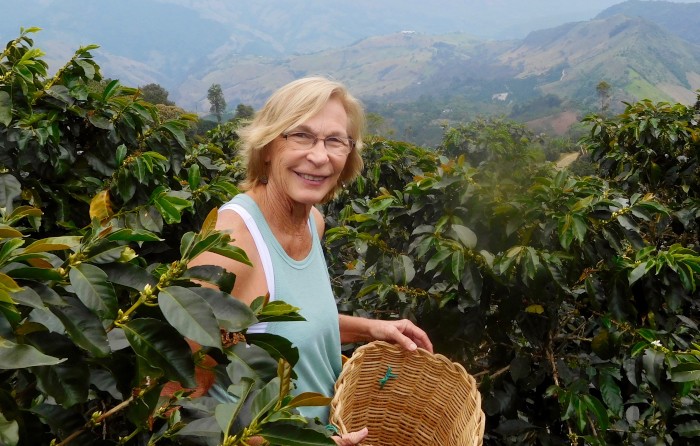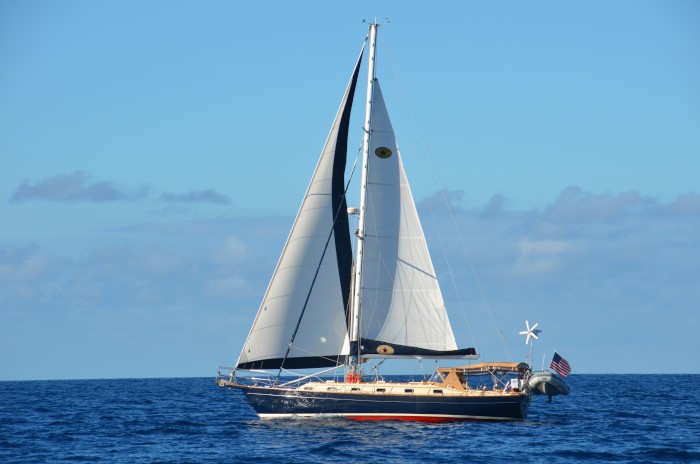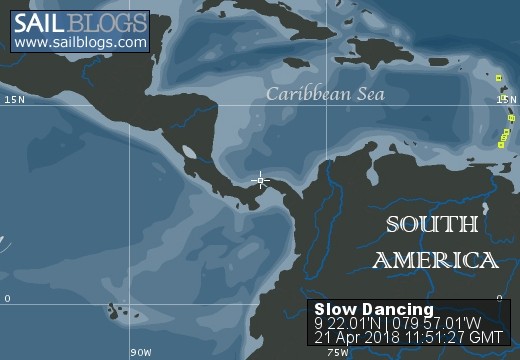
Slow Dancing
18 January 2020 | Rio Dulce, Izabal, Guatemala
08 November 2019 | Catamaran Marina Rio Dulce, Izabal, Guatemala
08 November 2019 | Catamaran Marina Rio Dulce, Izabal, Guatemala
08 November 2019 | Catamaran Marina Rio Dulce, Izabal, Guatemala
08 November 2019 | Catamaran Marina Rio Dulce, Izabal, Guatemala
08 November 2019 | Catamaran Marina, Rio Dulce, Izabal, Guatemala
08 November 2019 | Catamaran Marina, Rio Dulce, Izabal, Guatemala
06 October 2019 | Catamaran Marina Izabal, Guatemala
06 October 2019 | Catamaran Marina Izabal, Guatemala
06 October 2019 | Catamaran Marina Izabal, Guatemala
06 October 2019 | Catamaran Marina Izabal, Guatemala
06 October 2019 | Catamaran Marina Izabal, Guatemala
06 October 2019 | Catamaran Marina Izabal, Guatemala
06 October 2019 | Catamaran Marina Izabal, Guatemala
06 October 2019 | Catamaran Marina Izabal, Guatemala
01 October 2019 | Dream Catcher Eco Lodge Rio Dulce, Izabal
29 September 2019 | Catamaran Marina, Guatemala
29 September 2019 | Catamaran Marina, Guatemala
29 September 2019 | Catamaran Marina, Guatemala
29 September 2019 | Catamaran Marina, Guatemala
A Trip to Coffee Country
23 February 2018 | Santa Marta, Colombia
Melissa Still Windy

February 16, 2018
Many of the departments (similar to states or provinces) in Colombia produce coffee, specifically cofea arabica. Don Modesto, in the department of Antioquia near the small town of Concordia, is a plantation with 750,000 coffee bushes. Antioquia is the largest volume coffee producer of Colombia's 32 departments. At about 5,300 feet, the weather was glorious--bright sunshine, puffy clouds, delightful temperature, and no wind. In case, you have forgotten, we are stuck in Santa Marta! Winds have been mostly gale force for the month of February.
Coffee was everywhere on the mountainsides. We passed by small farms with beans drying along the roadside in the sun. The processes at Don Modesto reflected a much larger yield. Beans are hand picked. A good picker can pick up to 600 pounds a day during the height of harvest. Pickers work by row often on steep hillsides, leaving bags full of beans along the trail. Mosquitoes love the dense foliage of the bushes so workers cover their bodies. Our guide told us that everyone wants to work the harvest. The amount earned is much greater than a minimum wage job. Most workers, similar to migrants in the US, pay for lodging, so that they can work longer hours. The owners provide food. Motor scooters are the preferred means of travel to the fields.
Processing the beans, sorting for size, and drying the beans for shipping was very much like the processing at other coffee plantations we have visited. The fruit is striped from the seed, water runs through pipes to filter beans by size, sun dries the second and third quality beans, mechanical ovens dry the first quality. Once the first quality Arabica beans are dried, they are packed into 70-kilo bags for shipment. Parchment beans, or beans in husks, from Don Modesto are trucked to a nearby cooperative in Concordia for visual inspection, additional sorting, weighing and re bagging. Colombia ships bags of beans, stamped with the country code 3, to be sold overseas. Roasting occurs in the country where the beans are bought. Until about 3 years ago, all of the first quality beans in Colombia were shipped overseas. Today Colombians can keep about 30% of first quality beans for personal use and sale within the country. Price is set in the international market. Colombians party when the crop is poor in Brazil or Ethiopia!
We visited the heart of the finca where the owner has a hacienda. The finca manager lived next door in a small casa with his family. This farm also raised beef, hogs and tilapia. Waste products become fertilizer in the fields. Coffee bushes are pruned every 5 years. After the soca, or pruning, leaves decay into fertilizer and branches are trimmed for fuel in the dryers. Fruit and broken shells become mulch. Everything is used or recycled.
We watched the ritualistic process of brewing a cup of tinto. Juan, our guide and a former barista, heated 1000ml of water to 185* He measured 5 scoops (10 grams) of freshly ground medium roast beans into a French press. The aroma filled our senses. He poured a bit of water over the grounds, waited 1 minute, and finished pouring in water. After 4 minutes, he poured coffee into our glass demitasse size teacups. It was a gorgeous black brew with a light brown foam halo on the edges. The sharp orangey citrus flavor of the first sip was followed by delicious hints of caramel as the cup cooled. This medium roast coffee reminded us of the coffee we had tasted in Panama many years ago. Don Modesto, an award-winning producer, is only available in Colombia. I can only say that exporting would increase the income of the finca exponentially! What a taste!
Many of the departments (similar to states or provinces) in Colombia produce coffee, specifically cofea arabica. Don Modesto, in the department of Antioquia near the small town of Concordia, is a plantation with 750,000 coffee bushes. Antioquia is the largest volume coffee producer of Colombia's 32 departments. At about 5,300 feet, the weather was glorious--bright sunshine, puffy clouds, delightful temperature, and no wind. In case, you have forgotten, we are stuck in Santa Marta! Winds have been mostly gale force for the month of February.
Coffee was everywhere on the mountainsides. We passed by small farms with beans drying along the roadside in the sun. The processes at Don Modesto reflected a much larger yield. Beans are hand picked. A good picker can pick up to 600 pounds a day during the height of harvest. Pickers work by row often on steep hillsides, leaving bags full of beans along the trail. Mosquitoes love the dense foliage of the bushes so workers cover their bodies. Our guide told us that everyone wants to work the harvest. The amount earned is much greater than a minimum wage job. Most workers, similar to migrants in the US, pay for lodging, so that they can work longer hours. The owners provide food. Motor scooters are the preferred means of travel to the fields.
Processing the beans, sorting for size, and drying the beans for shipping was very much like the processing at other coffee plantations we have visited. The fruit is striped from the seed, water runs through pipes to filter beans by size, sun dries the second and third quality beans, mechanical ovens dry the first quality. Once the first quality Arabica beans are dried, they are packed into 70-kilo bags for shipment. Parchment beans, or beans in husks, from Don Modesto are trucked to a nearby cooperative in Concordia for visual inspection, additional sorting, weighing and re bagging. Colombia ships bags of beans, stamped with the country code 3, to be sold overseas. Roasting occurs in the country where the beans are bought. Until about 3 years ago, all of the first quality beans in Colombia were shipped overseas. Today Colombians can keep about 30% of first quality beans for personal use and sale within the country. Price is set in the international market. Colombians party when the crop is poor in Brazil or Ethiopia!
We visited the heart of the finca where the owner has a hacienda. The finca manager lived next door in a small casa with his family. This farm also raised beef, hogs and tilapia. Waste products become fertilizer in the fields. Coffee bushes are pruned every 5 years. After the soca, or pruning, leaves decay into fertilizer and branches are trimmed for fuel in the dryers. Fruit and broken shells become mulch. Everything is used or recycled.
We watched the ritualistic process of brewing a cup of tinto. Juan, our guide and a former barista, heated 1000ml of water to 185* He measured 5 scoops (10 grams) of freshly ground medium roast beans into a French press. The aroma filled our senses. He poured a bit of water over the grounds, waited 1 minute, and finished pouring in water. After 4 minutes, he poured coffee into our glass demitasse size teacups. It was a gorgeous black brew with a light brown foam halo on the edges. The sharp orangey citrus flavor of the first sip was followed by delicious hints of caramel as the cup cooled. This medium roast coffee reminded us of the coffee we had tasted in Panama many years ago. Don Modesto, an award-winning producer, is only available in Colombia. I can only say that exporting would increase the income of the finca exponentially! What a taste!
Comments
| Vessel Name: | Slow Dancing |
| Vessel Make/Model: | Island Packet 44 |
| Hailing Port: | Annapolis, MD |
| Crew: | Melissa and Dan Kenshalo |
| About: | We began sailing on Chesapeake in 2005. Seven years later we became full time cruisers. We have explored the Bahamas, Eastern Caribbean, Western Caribbean and Central America. Our journeys have been full of fun and laughter. |
Chronicles of Slow Dancing

Who: Melissa and Dan Kenshalo
Port: Annapolis, MD


